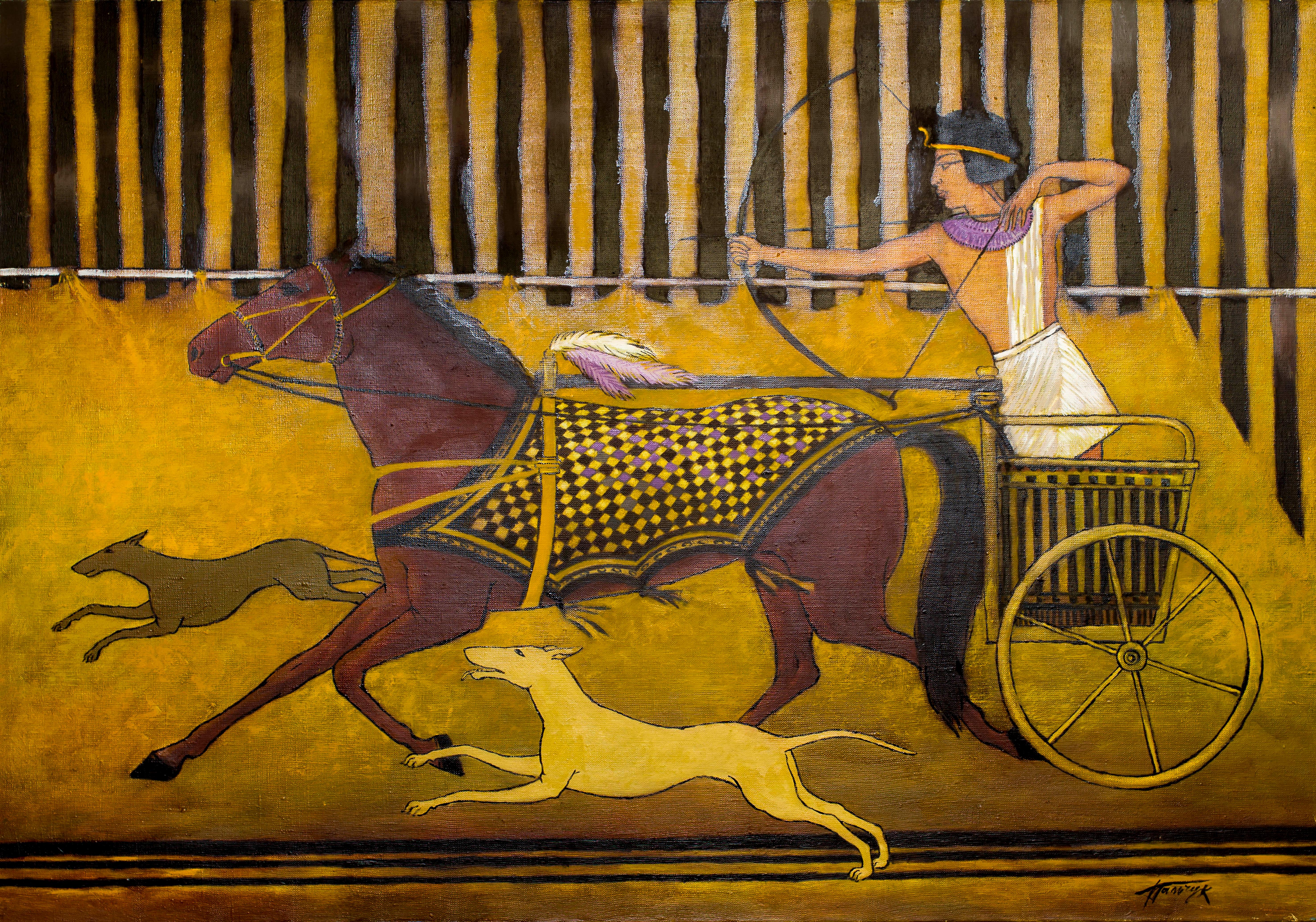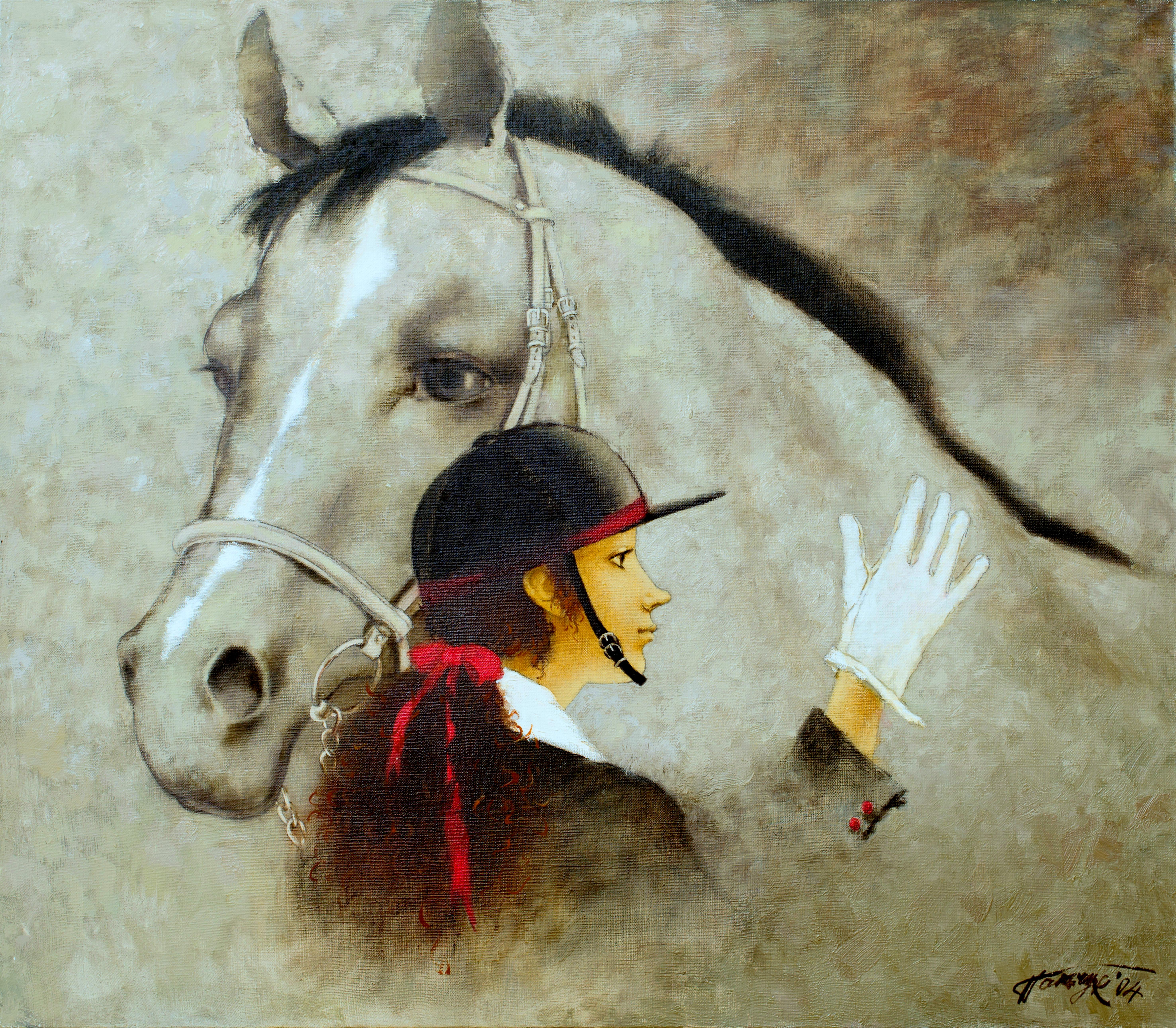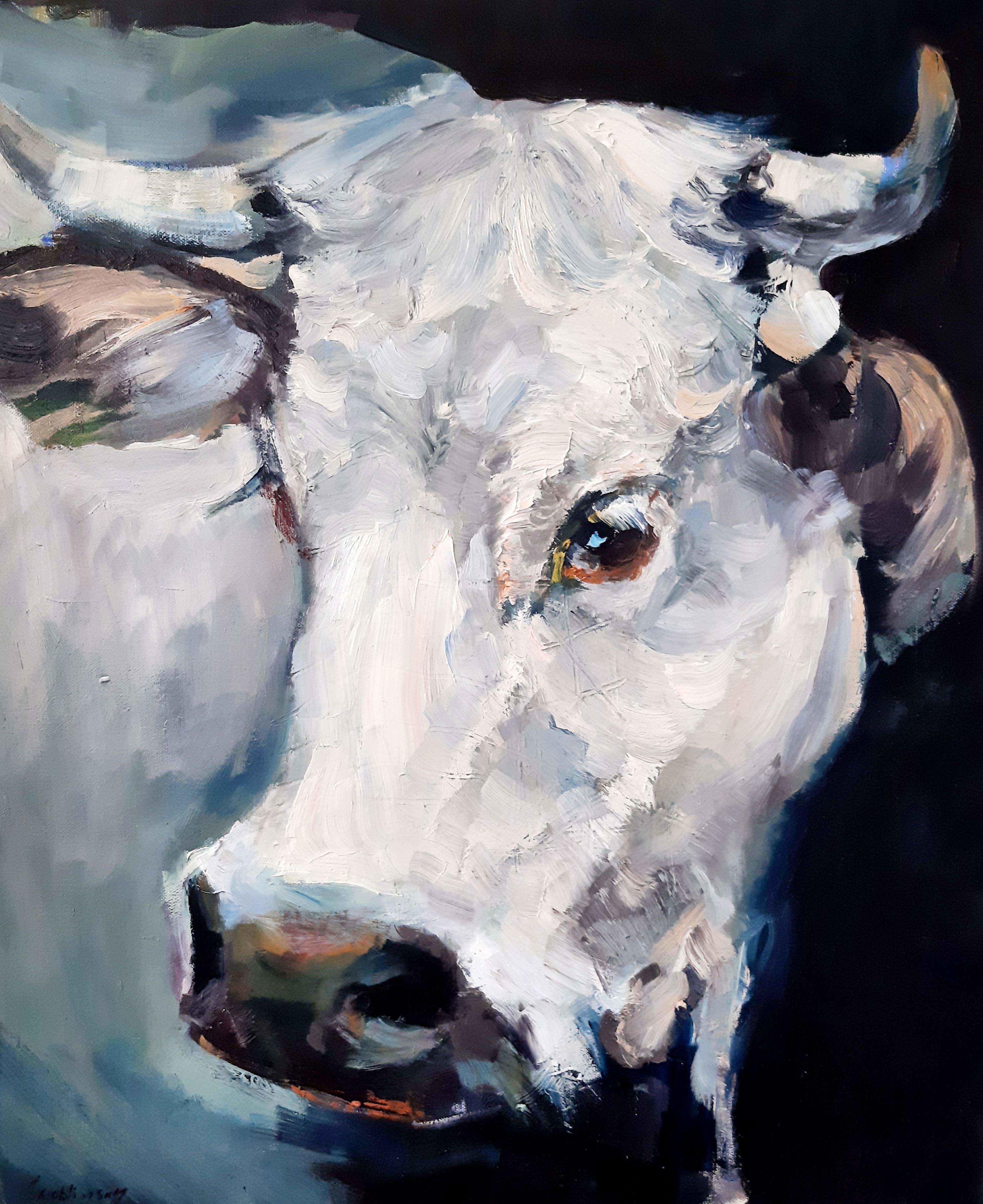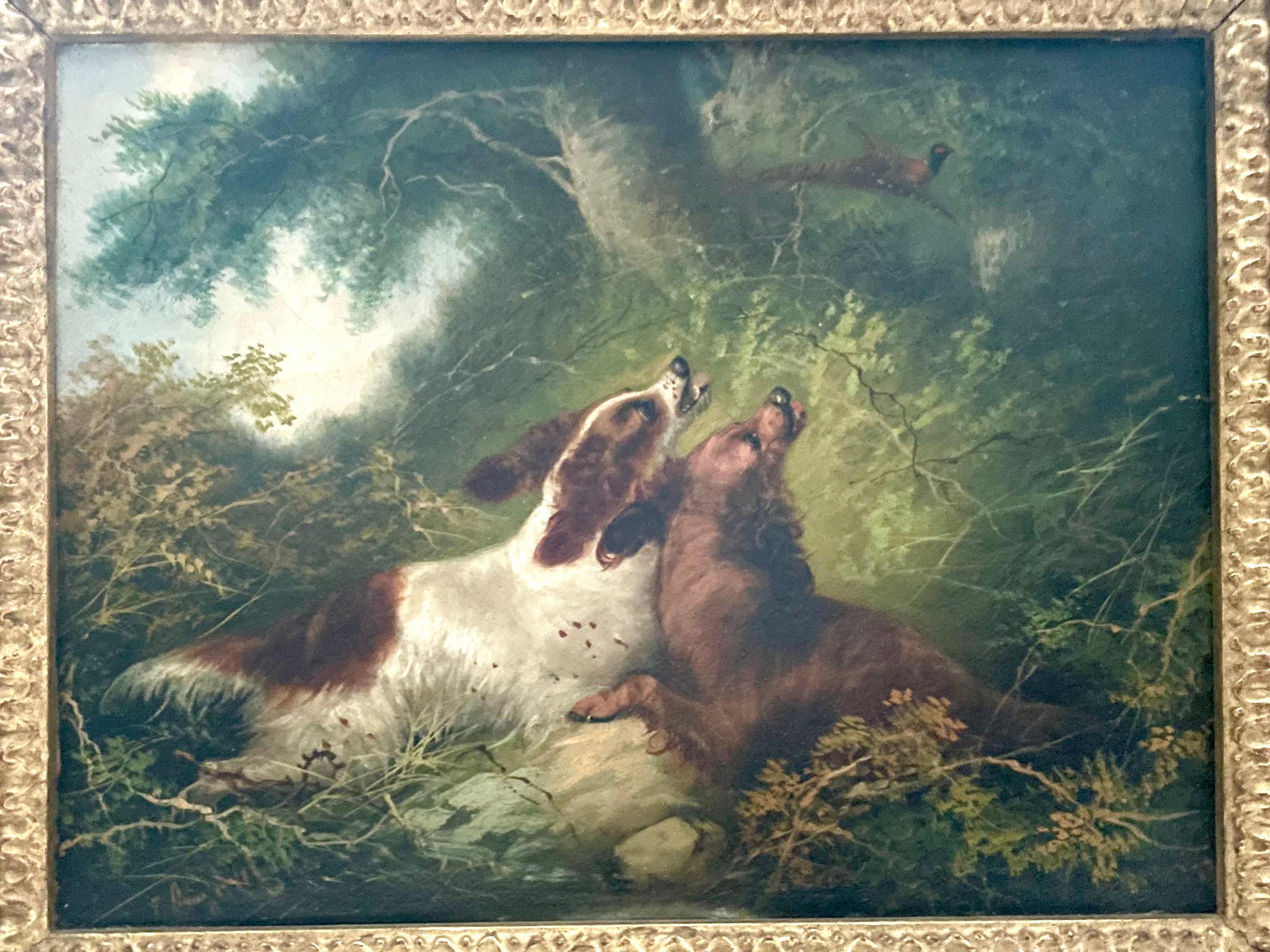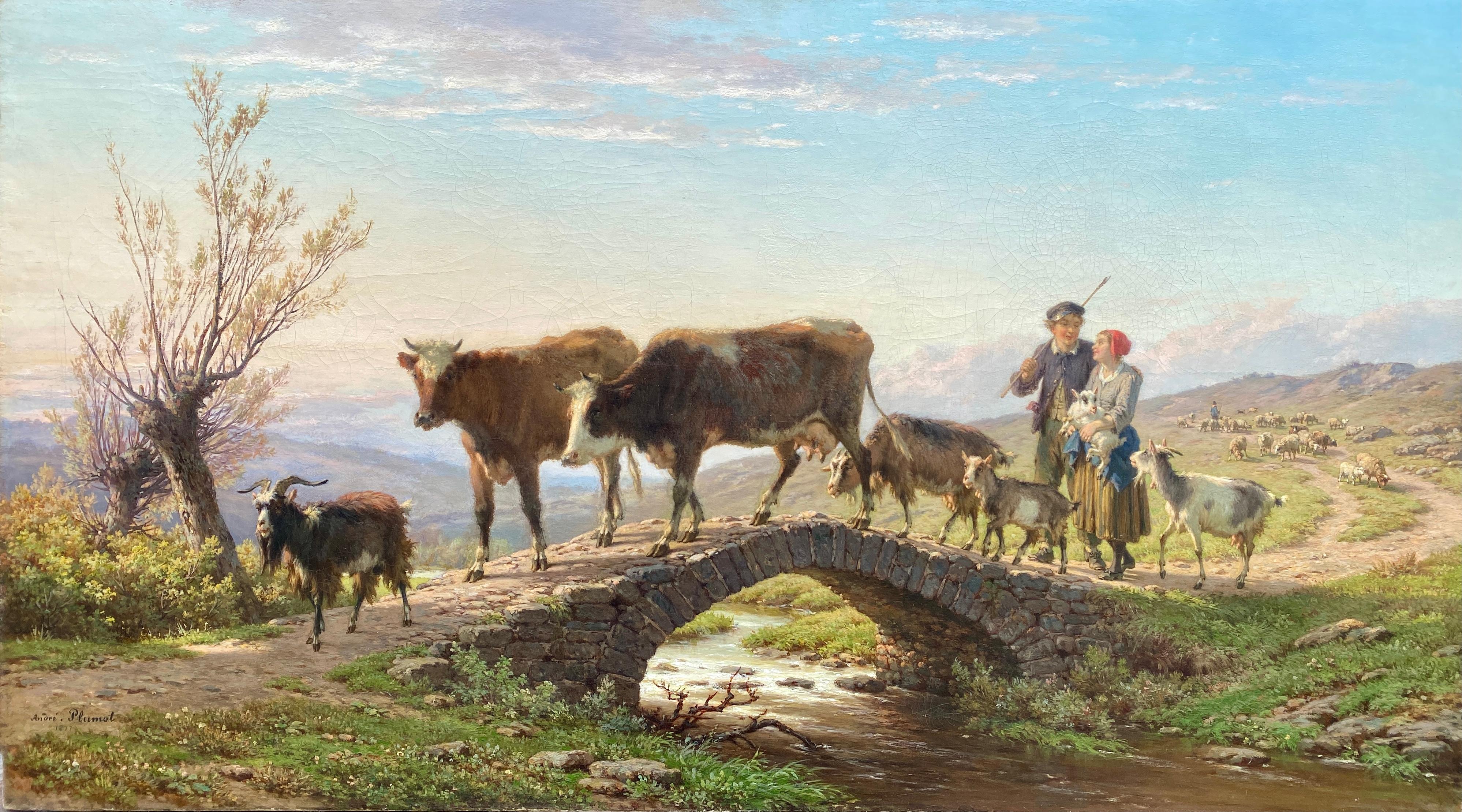Items Similar to Portrait of a Newfoundland dog, William Smith, British Painting, 1838, Pets Art
Want more images or videos?
Request additional images or videos from the seller
1 of 11
William SmithPortrait of a Newfoundland dog, William Smith, British Painting, 1838, Pets Art1838
1838
About the Item
The works of William Smith were regularly exhibited at the Royal Academy in London between 1813 and 1859. Yet little is known about this artist. He lived in Shropshire and was active as an animal and landscape painter. Especially common are depictions of dogs or horses from his hand.
- Creator:William Smith (1790 - 1870, English)
- Creation Year:1838
- Dimensions:Height: 23.63 in (60 cm)Width: 28.75 in (73 cm)
- Medium:
- Movement & Style:
- Period:
- Condition:
- Gallery Location:Greven, DE
- Reference Number:1stDibs: LU155029842622
About the Seller
4.8
Vetted Seller
These experienced sellers undergo a comprehensive evaluation by our team of in-house experts.
Established in 2011
1stDibs seller since 2021
20 sales on 1stDibs
Typical response time: 3 hours
- ShippingRetrieving quote...Ships From: asper, Belgium
- Return PolicyA return for this item may be initiated within 14 days of delivery.
More From This SellerView All
- German School, Animal Hunting Scene, Hunter with Dogs, Hares, Cabinet PaintingLocated in Greven, DEGerman School or Swiss School, 19th Century, Hunting Scene, Hunter with Dogs, Hares, Painting indistinctly signed. Fine and detailed painted scene of a hunt with dogs, a hunter and h...Category
19th Century Romantic Figurative Paintings
MaterialsCanvas
- Noble Hunting Society wild Boar Deer and Dogs, Hunter's Life, 1822, WatercolourLocated in Greven, DEThis Watercolor drawing shows a noble hunting society. The duke (?) on horse and several noble ladies accompanying the soctiety. The duke (?) gestures towards a group of hunters on h...Category
19th Century Romantic Animal Paintings
MaterialsWatercolor
- Van der Bent, Southern Landscape with woman animals, Dutch Old Master, BerchemLocated in Greven, DE17th Century Old Master, Figurative and Landscape Painting by Jan Van der Bent So far, little is known about the life and work of Jan van der Bent. He was...Category
17th Century Baroque Landscape Paintings
MaterialsCanvas, Oil
- Gottfried Libalt, Still Life with Birds, Fruits and Vegetables Landscape, signedLocated in Greven, DEStilllife with dead Birds, Fruits and Vegetables Oil on Canvas, 101 x 84 cm signed (upper left) „G Libald “ (G and L ligated) Provenance: Private Collection, Brussels; Private Coll...Category
17th Century Baroque Animal Paintings
MaterialsOil, Canvas
- Songbird in Snowy Landscape, Winter Bird, Danish?, J Brady, signed and datedBy Joan BradyLocated in Greven, DEDanish Painter School J Beney? J. Brady? signed and dated lower left 1868 Songbird in a snowy undergroundCategory
19th Century Naturalistic Animal Paintings
MaterialsCanvas, Oil
- Flemish 17th, Orpheus and Animals, Large Decorative Wall Old Master PaintingLocated in Greven, DEFlemish school, 17th century Orpheus and the animals Oil on canvas, 146,5 x 217 cm Provenance: South German private collection. On an impressive, room-filling format, this painting depicts "Orpheus and the Animals." The harp-playing Orpheus sits centrally in front of a tree whose trunk bifurcates above his head. This central tree frames with its crown the scenery towards the horizon and at the same time offers through branches the possibility for many birds to find space. The left half of the picture is characterized by a seascape, at the edge of which the ruins of a castle can be seen deep in the background. This seascape, framed by mountains on the horizon, is the only area where sky can be seen. On this side, waterfowl such as storks, swans and ducks can be seen. In the right half, the viewer looks into a deep European forest. On this right side, more land animals can be found, such as deer, rabbits and lions, among others. Orpheus wears opulent red and gold trimmed clothing, under his blue breastplate we see a white shirt. His feet are adorned by elaborate sandals. His head is surrounded by a radiant laurel wreath ("poeta laureatus"). The young man is clearly identifiable as the singer and poet of Greek mythology, Orpheus, by his harp, the laurel wreath and the animals surrounding him. Orpheus was one of the Argonauts who, under Jason, was searching for the Golden Fleece. He sang so beautifully that he even conquered the angry sea and enemies by the magic of his lyre. During the journey, Orpheus is said to have drowned out even the sirens with his singing. It is said that he was the greatest of all poets and charmed people, animals, stones and trees with his singing. In total, 51 birds and 37 different species are depicted in the painting. The animals are mostly depicted in great detail and, except for a few, can be identified. Mainly European species of animals are shown. Exceptions are the ostrich-like nandu peeking out from behind the deer, as well as the large parrot on the upper left, and the two lions. Similar is the case for the large animal directly behind Orpheus on the right. The shape of the head suggests an arctic fox from the polar regions, even though the body is much too large. The arctic fox was first described in 1555 by Olaus Magnus. However, it could also be a depiction of a brown or black bear. An unusual detail is the animal, which is relatively isolated in the right background and looks to the left. It is not clearly identifiable, but it shows certain similarities with the Australian kangaroo. This was first described by Vespucci in 1500 and further by Francisco Pelsaert in 1629. If it is indeed a kangaroo, this would be one of the earliest surviving pictorial representations. In this painting, Orpheus is accompanied by a small monkey playing a viola da gamba. This is an iconographic peculiarity. In general, this painting has some peculiarities compared to other paintings with "Orpheus and the animals". The central positioning of Orpheus is quite common, but he usually holds a lyre and is dressed in an antique style, but not as opulently. The choice of animals is also remarkable: European animals in particular are seen, hardly any exotic features, such as camels or elephants. The two lions in the right foreground are a quotation from Peter Paul Rubens and his depiction of "Daniel in the Lion's Den", which was realized in an engraving. The present painting can be classified as belonging to the Flemish School of the 17th century on the basis of its painterly and compositional conception. From the circle of Jan Brueghel the Younger are numerous representations of this Orpheus - theme, which take it as an opportunity to show as many exotic animals. There are also echoes of Spanish painters such as Juan de Arellano...Category
17th Century Baroque Landscape Paintings
MaterialsOil, Canvas
You May Also Like
- Huge 19th century Victorian oil landscape - Summer in the HighlandsLocated in Antwerp, BE19th century English countryside landscape "Summer in the Highlands" This peaceful painting depicts an Highlands countryside scenery during a sunny summerday. In the foreground two ...Category
19th Century Romantic Landscape Paintings
MaterialsCanvas, Oil
- Pharaohs hunting. 2001. Oil on linen, 70x100 cmLocated in Riga, LVPharaohs hunting. 2001. Oil on linen, 70x100 cmCategory
Early 2000s Romantic Figurative Paintings
MaterialsCanvas, Linen, Oil
- Girl with horse. 2004. Oil on canvas, 65x75 cmLocated in Riga, LVGirl with horse. 2004. Oil on canvas, 65x75 cmCategory
Early 2000s Romantic Figurative Paintings
MaterialsCanvas, Linen, Oil
- Unrivaled Fascination: White Cow's Energetic Presence on a Dark Surface.Located in Sempach, LUThe depiction of a young white cow on a black background using oil paints creates a unique and captivating painting. Its endlessly playful expression gives the artwork a special char...Category
21st Century and Contemporary Romantic Animal Paintings
MaterialsOil, Cotton Canvas, Canvas
- Spaniels Chasing PheasantBy George ArmfieldLocated in Hillsborough, NCCharming oil painting on canvas by renowned genre artist George Armfield (1808-1893), of two dogs chasing a pheasant. The expression of sheer dog happiness in the chase. and the phe...Category
19th Century Romantic Animal Paintings
MaterialsCanvas, Oil
- André Plumot, 1829 – 1906, Shepherds Couple with Herd in a River LandscapeLocated in Bruges, BEPlumot André Antwerp, Belgium 1829 – 1906 Belgian Painter Shepherds Couple with Herd in a River Landscape Signature: Signed bottom left and dated 1877 Medium: Oil on canvas Dimensi...Category
Late 19th Century Romantic Landscape Paintings
MaterialsOil, Canvas
Recently Viewed
View AllMore Ways To Browse
Antique Dog Art
Antique Smith
Smiths Antique
Antique Dog Painting Paintings
Antique Dog Painting
Antique Dog Paintings
Antique Painting Dog
Dog Painting Antique
Dog Painting 19th
William A Smith
Antique Paintings Of Dogs
Antique Pets
Dog Paintings Horse Paintings
Horse Dog Painting
19th Century Oil Paintings Of Dogs
Horse And Dog Painting
19th Century Dog Portrait
Portraits Dogs Oil

